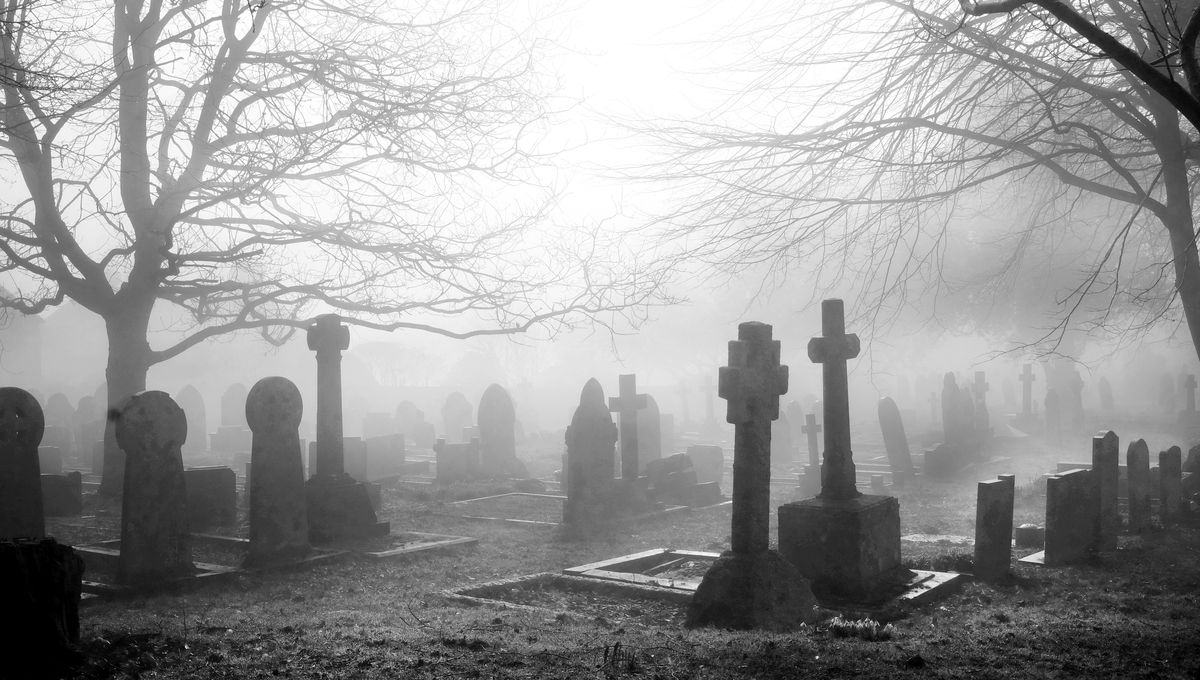
Through one of history’s more morbid games of telephone, the myth of the vampire, and how to contain it, was born. A culmination of medical ignorance and re-interpreted religious practises meant the threat of spooky ghoulies used to be very real – at least in the minds of the public.
Seeking protection against what we now know as ”vampires” may, to us, seem ridiculous and far-fetched but, for centuries, populations around the world have endeavoured to keep these un-dead menaces in the ground.
So, what does history tell us about how to prevent a vampire uprising?
Scythes and sickles
The burying of a corpse with scythes or sickles was a widespread practice with European origins in the Early Middle Ages. Archaeologists recently uncovered the body of a 17th century woman, buried with a sickle across her neck. Practices like this are a more clear-cut preventative measure (try fighting your way out of a grave with a scythe pinning you across the neck), but there is a more symbolic reason too.
It’s believed that the presence of these weapons worked to satisfy any demons intending to enter the body of the deceased, appeasing the spirits, and preventing them from possessing the body and wreaking havoc on the poor unsuspecting villagers.
Closely resembling the ancient Greek practice of placing a coin in the corpse’s mouth – meant as toll payment for crossing the River Styx – some believe this practice may have been misinterpreted. The discovery of coins in the mouth of exhumed corpses may have led later generations to believe the coins were placed there to ward off demons.
Arithmomania
One of the lesser-known methods of vampire prevention targets the assumption that all vampires, much like Count von Count from Sesame Street, suffer from arithmomania – an expression of obsessive-compulsive disorder (OCD) with an emphasis on counting.
By placing poppy seeds, rice, millet, or sand around the grave, it was believed the risen undead would have to pause and count each piece individually before they could continue on their murderous rampage.
Historical evidence of this practice is widespread and relatively common throughout Europe, China, the Indian subcontinent, and South America.
Physical mutilation
The mutilation of suspected vampires post-mortem was common practice in many cultures. Decapitation, cremation, dismemberment, and tendon severing, to name a few, were all thought to hinder the mobility of the undead when they inevitably arose. As was burying the bodies upside down or face down, directing them to dig away from the surface.
These mutilation practices, along with the inclusion of a scythe across the neck, are common ways in which archaeologists are now able to identify an anti-vampire burial.
The role of religion
Catholicism throughout Europe and North America has historically played a significant role in the belief in the supernatural. The public fear of straying from your religious practices and the eternal punishment if you did, perpetuated the idea that individuals could be punished by supernatural beings from beyond the grave.
Religious beliefs paired with medical ignorance led people to interpret natural processes of decomposition as being signs of the devil, and in turn, evidence for the existence of vampires.
The fear of disease, which is thought to be the cause of many vampire-like symptoms, may also have contributed to the societal need for a feeling of protection from what was then unexplainable.
The link between the myth of the vampire and religion led to the inclusion of religious practices in the fight against the pesky bloodsuckers. Exorcisms of the deceased’s body were often performed, and concoctions made from their organs that were intended to be drunk by the inflicted to “heal” them. Considering contagious diseases were often the cause of death, this was probably not a smart move.
As the vampire began to make its way onto our screens in the mid-late 19th century, how people perceived the vampire myth began to change. While “vampire” subcultures still exist today, as does the ability to purchase vampire slaying kits, society’s fear seems to have ceased, and people are instead now queuing to get a COVID jab in Dracula’s castle.
Source Link: History's Guide To Making Sure Vampires Don't Rise From The Dead